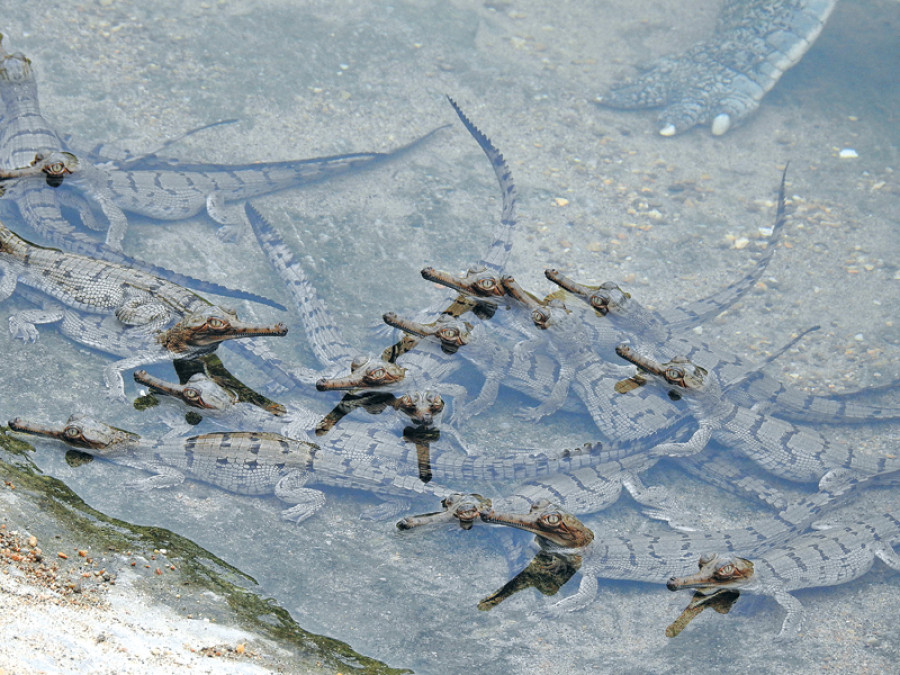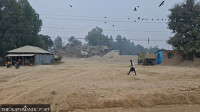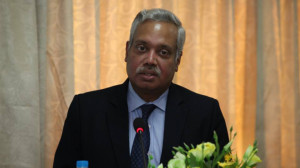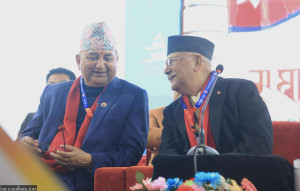National
Success story at BNP: 30 endangered gharials bred
The Bardiya National Park (BNP) has witnessed a successful breeding of over 30 critically endangered gharials (Gavialis gangeticus) in captivity after 34 years.
Pragati Shahi
The Bardiya National Park (BNP) has witnessed a successful breeding of over 30 critically endangered gharials (Gavialis gangeticus) in captivity after 34 years.
On Friday, the gharial crocodiles hatched eggs inside the crocodile breeding centre in the BNP for the first time since it was established in 1982. “This is a hopeful sign for revival of gharial population in the wild that is declining due to human disturbance,” said Ramesh Thapa, chief conservation officer at the BNP.
“At the same time, it is crucial to ensure the survival of the captive-bred gharials both in the captivity and once they are released in the wild.
Various studies suggest that the survival rate of gharials in the wild is only one percent while it is 25-30 percent in the captivity.
“The success rate of survival of captive hatchlings after their release in the wild is significantly low,” Thapa said. There are 11 gharials in captivity inside the BNP breeding centre, while the population in the wild stands at 31, including 26 females. The 2011 census put the total number of gharials in the wild at 102, up from 81 in 2008.
Besides Bardiya, the Chitwan National Park (CNP) manages the country’s successful captive breeding centre for gharials, with their number totalling over 600. In 1978, the Gharial Conservation Programme was initiated in Chitwan to protect the wild population of gharials from extinction through ex-situ conservation. “As their population in the wild continues to suffer due to human activities and habitat disturbances, the conservationists came up with the idea of improving the number of individuals through captive breeding,” said Maheshwar Dhakal, deputy director general at the Department of National Parks and Wildlife Conservation (DNPWC).
Under the programme, the CNP started breeding gharial hatchlings in the captivity in 1981 and continued for 3-4 years. They have been released into the wild habitats in various major river systems almost every year, but with a disappointing survival rate. Over 1,056 gharial hatchlings have been released into major rivers. More than 100 were released in Karnali since 1991, but only one gharial was spotted, said Thapa.
Gharials in Nepal face threats from excessive and uncontrolled fishing, sand mining and gravelling along with various development activities such as construction of dams and embankments along Nepal-India border have affected their basking and nesting sites and cause habitat disturbance.
The gharial population, which was estimated between 5,000 and 10,000 worldwide during 1940s, declined by almost 96 percent to below 200 by 1976. This species—the only surviving member of the Gavialidae family—breeds only in the wild in Nepal and India and occupies only 2 percent (less than 200 mature breeding adults in number) of its historical range at present. The gharials have already extinct from Myanmar, Pakistan, Bhutan and Bangladesh.




 18.12°C Kathmandu
18.12°C Kathmandu















